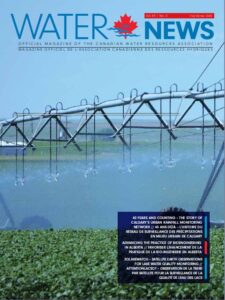Global Water Futures: Solutions to Water Threats in an Era of Global Change
by Stacey Dumanski, Stephanie Merrill, Chris DeBeer, John Pomeroy
Water News
Volume 39, number 3 – Fall/Winter 2020
Canada is losing its cool. The climate in Canada is warming twice as fast as the global average, with some areas in the north tripling that pace. Precipitation is changing too, with increases in many parts of the country and greater concentrations in floods and droughts. Climate and water are fundamentally linked in the earth system – water governs the climate and in turn climate affects water availability and timing. Together they support diverse ecosystems and aspects of water for human use: food production, manufacturing and recreation. This rapid climate warming, coupled with land use changes, has already resulted in destructive changes to the Canadian hydrology and that of cold regions around the world. Snowpacks are declining, glaciers are retreating with accelerated melt, precipitation patterns are changing, all while floods are intensifying and risk of drought and wildfires are increasing. All of these changes pose great challenges to the security of our critical infrastructure, ecosystems, and human health.
Water News Magazine is available to members of the Canadian Water Resources Association. Membership information can be viewed at: https://cwra.org/en/membership/


